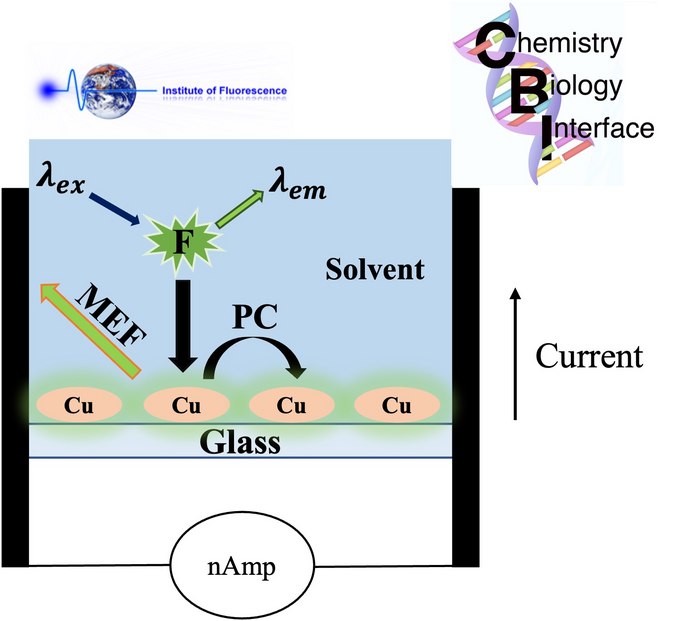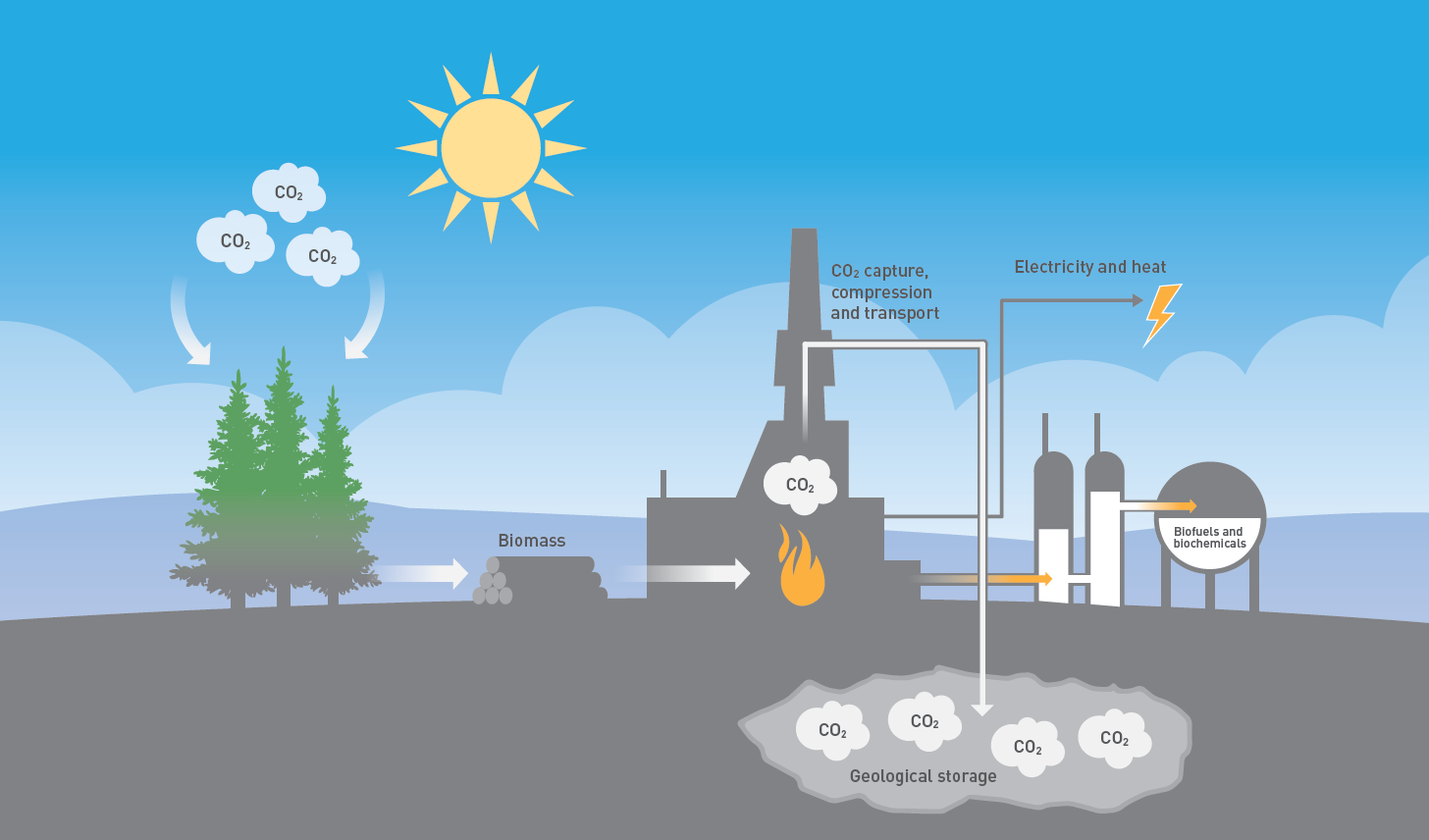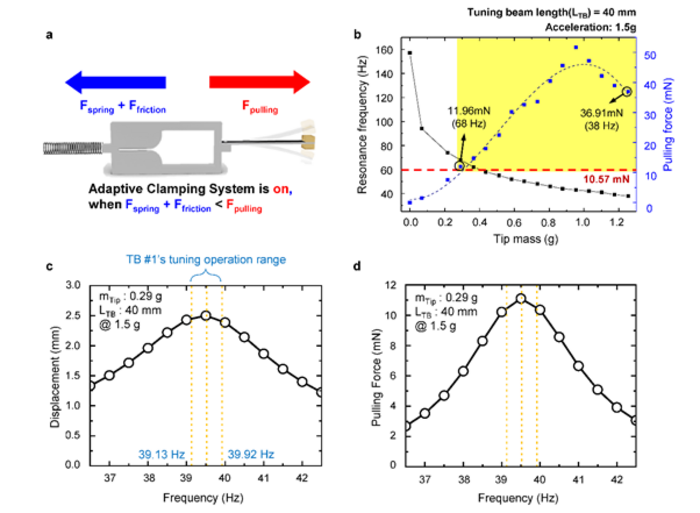
Plasmon to Current technology. Fluorophores produce an induced current in the metal, which is proportional to the magnitude of the fluorophore’s extinction coefficient, ?. MEF – Metal-Enhanced Fluorescence PC – Plasmonic Current Cu – Copper metals
CREDIT: Image courtesy of Lahari Saha
Current solar panels are inefficient and contain toxic materials, a different approach that harnesses plant molecules like chlorophyll could lead to improvements
Our current solar panels aren’t very efficient; they are only able to convert up to about 20 percent of the sun’s energy into electricity. As a result, to generate a lot of electricity, the panels require a lot of space—sometimes leading forests to be cut down or farms to be replaced by solar. If solar panels were more efficient, much smaller panels could make the same amount of electricity, and wouldn’t claim as much land.
To make solar panels that are more efficient, Lahari Saha, in the lab of Professor Chris D. Geddes at the University of Maryland, Baltimore County, is working to make electricity in a unique way—by harnessing plants’ abilities to convert sunlight into chemical energy using biological molecules, like chlorophyll, that excel at absorbing sunlight. Saha will present her work on Wednesday, February 22 at the 67th Annual Biophysical Society Meeting in San Diego, California.
Their goal is to use biological molecules to make electricity that can then be harvested and used to power devices or stored in batteries for later use. The process involves leveraging molecules’ fluorescence. “Any sort of molecule that fluoresces, gives off light. If we excite the fluorophore, it can transfer its energy to metal nanoparticles, and if the particles are close enough to each other, they will knock off electrons and generate current,” Saha explained. The process is not just limited to molecules that fluoresce, Saha explained, they just need to have high absorption of light such as chlorophyll, beta carotene, or lutein. Each of these are relatively inexpensive and easy to derive from plants
The other benefit of this kind of fluorescence-based solar panel is that it would be easier to recycle. Currently, solar panels rely on expensive materials like silicon and contain elements that can be toxic, including l??ead and cadmium—in most states solar panels are considered hazardous waste when it’s time to dispose of them. But Saha is hopeful that her solar panels will be primarily plant-based molecules and other materials that are relatively prevalent like copper, making them easier to recycle when the time comes. Plus, by selecting materials with greater longevity, she hopes the solar panel will last longer before it is time to dispose of them.
But Saha’s top goal is to make a solar panel that’s more efficient, “so it doesn’t have as large of a footprint,” she said. She hopes her smaller solar panels will allow farms to maximize food production over generating energy, and will keep forests preserved.
Original Article: Harnessing plant molecules to harvest solar energy
More from: University of Maryland Baltimore County
The Latest Updates from Bing News
Go deeper with Bing News on:
Biological molecules make electricity
- Bacteria 'nanowires' could help develop green electronics
Engineered protein filaments originally produced by bacteria have been modified by scientists to conduct electricity. In a study published recently in the journal Small, researchers revealed that ...
- The JRC explains: technologies for fighting airborne germs - PCR, sequencing, and the rest
During the COVID-19 pandemic, most of us made a rather intimate acquaintance with some of these technologies. And many of us are still confused about ...
- Researchers Create Nanogenerator Capable of Using Greenhouse Gas to Produce Electricity
One day, according to Brisbane Times, Dr. Wang saw it was consuming CO2 in the laboratory air to make electricity.
- Good bacteria: Why sustainability engineers are turning to microbes
To tackle these challenges, an increasing number of engineers are turning to bacteria. Like the microorganisms that play a vital role regulating our health, engineered bacteria could help heal the ...
- Can citizens trust sustainable aviation fuel?
The market for low-carbon fuel for airplanes is still nascent, but it is growing. As airlines try to sell themselves as greener than their competitor, how can claims about their fuels be verified?
Go deeper with Bing News on:
Fluorescence-based solar panel
- Scientists make breakthrough while investigating potential of solar panels: 'We figured some other ways to capture more solar energy'
Making solar panels that are less burdensome to install could increase their adoption worldwide. Scientists make breakthrough while investigating potential of solar panels: 'We figured some other ways ...
- Planned solar panel manufacturing plant to employ over 900 in eastern NC
Vietnam-based Boviet Solar is set to use Greenville, North Carolina, as the site of its first solar panel manufacturing plant in North America ...
- Key Solar Panel Ingredient Is Made in the U.S.A. Again
REC Silicon says it will soon start shipping polysilicon, which has come mostly from China, reviving a Washington State factory that shut down in 2019.
- Engineers uncover key to efficient and stable organic solar cells
A team of researchers led by Professor Philip C.Y. Chow from the Department of Mechanical Engineering at the University of Hong Kong (HKU) has made a significant breakthrough in the field of organic ...
- Scientists released long-term data of ground solar-induced fluorescence to improve understanding of canopy-level photosynthesis
A recent study utilized ground-based instruments to measure solar-induced fluorescence (SIF) that reflect plant health and photosynthesis.










